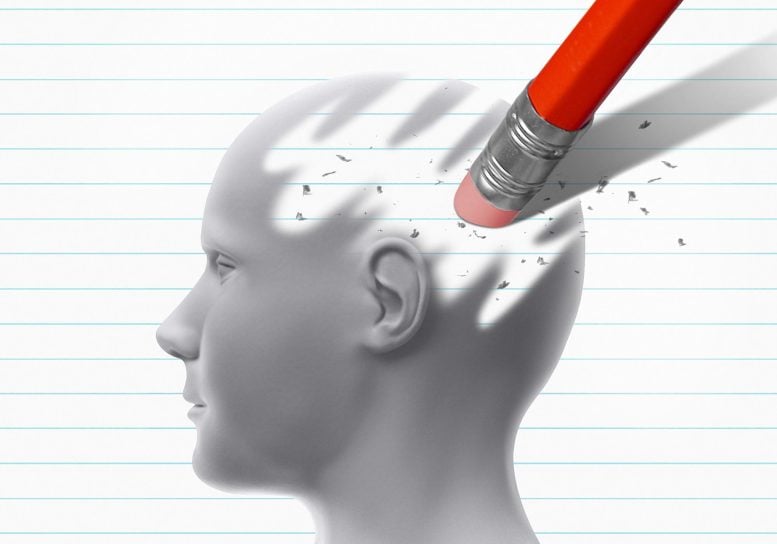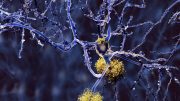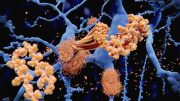
Evidence revealed that scientists had faked images in a study published 16 years ago. This was an important paper that other researchers had trusted and relied on as they did their own work.
Despite a scientific scandal and unsuccessful drugs, scientists have made strides beyond amyloid, and shown the power of prevention too.
If you’ve been following the news about Alzheimer’s disease research in recent months, you may be wondering what else could go wrong.
First, a much-anticipated new drug called Aduhelm got approval from the Food & Drug Administration (FDA) – but its actual benefit for Alzheimer’s was so small that insurance won’t cover it for most patients.
Then, several other promising drugs in development by pharmaceutical companies were shelved or showed less-than-impressive results in clinical trials.
And then to top it off, a major scandal broke. New evidence was revealed that researchers had faked images in an Alzheimer’s study published 16 years ago. This was a high-impact paper that other researchers had trusted and relied on as they did their own work.
And what do all of these Alzheimer’s Disease developments have to do with one another?
They’re all linked to the molecule beta-amyloid, the plaque-forming sludge that gunks up the outside of brain cells. This is the molecule that decades of Alzheimer’s research focused on as an important factor in the disease and a key to potential treatments to reverse it.
But in fact, scientists at the Michigan Alzheimer’s Disease Center and elsewhere have spent years looking beyond amyloid in the search for answers to the roots of dementia and ways to prevent or treat it.
“It’s true that amyloid plays a role in the brain and dementia, but Alzheimer’s disease is complicated and there’s much more to it than one molecule,” says Henry Paulson, M.D., Ph.D., who directs the center and has devoted his own laboratory’s research at Michigan Medicine and his clinical care to dementia and other neurodegenerative diseases for decades.
The study at the center of the scandal has to do with a specific form of amyloid, AB*56, that was put forth as an important “toxic oligomer” encouraging plaque formation.
However, Paulson says he and many of his colleagues have not paid much specific attention to it for many years. That’s because researchers haven’t been very successful at achieving the same results that the original researchers claimed.
“I’m more worried about what this news might do to the public’s perception of science than to our ability to make progress against this disease,” he says. The long delay in uncovering the alleged fakery isn’t ideal, and shows the importance of scientists speaking up and publishing results even when their experiments fail to prove another team’s claim.”
This kind of publishing of “negative results” – papers that don’t give good news about a potentially promising idea – is not always encouraged, because scientists have more reason to leave those results on the shelf and spend time writing papers about things that do work.
But if no one knows that an effort to reproduce a scientific discovery has failed, then other scientists could spin their wheels driving down a blind alley.
There’s plenty of evidence that middle-aged and older adults who want to reduce their risk of dementia, or slow its onset, should focus on healthy habits like sleep, exercise, nutrition, social engagement, and controlling blood pressure and cholesterol.
Paulson notes that it is still important to study the protein that gets cut up, or cleaved, in order to make different forms of beta-amyloid, and the consequences of that process.
However, he’s not necessarily surprised by the failure of Aduhelm, the much-talked-about drug that got approval last year, to produce a sizable effect even in the patients it was tested in.
The drug is not available at the clinics or hospitals of Michigan Medicine. Medicare will only cover its high cost for people taking part in clinical trials. Other drugs in the pipeline at drug companies that focus on beta-amyloid should be scrutinized carefully before getting any approval, Paulson adds.
“We believe much more attention needs to be paid to other factors and proteins underlying various dementias, ranging from environmental factors, to the immune system, to specific molecules like tau, which is the other hallmark protein of Alzheimer’s disease,” he explains. “In my view, the Aduhelm story underscores the importance of continuing to look for other therapeutic targets in Alzheimer’s disease and related dementia.”
Targeting amyloid for treatments may be like trying to saddle up a horse that has already left the barn, he says – too much has happened in the disease process by the time the plaques begin to form for a treatment to make much of a difference.
Working upstream in the process, and doing more with modern tools to understand the process by studying people in the early stages of memory loss, could prove more important.
That’s why the Michigan Alzheimer’s Disease Center is continually seeking people to take part in studies involving everything from brain scans to surveys. Anyone who wants to get involved can start the process by making an initial inquiry.
Alzheimer’s and other forms of dementia are complicated diseases, and likely result from multiple things going wrong in the brain over time. It’s not just one rogue molecule, Paulson explains. So it may end up that we need to treat patients with multiple treatments at once, targeting several aspects of their disease – just like cancer or HIV-positive patients receive today.
But in the meantime, studies have already shown another important upstream effect that many people may not realize, Paulson says.
There’s plenty of evidence that middle-aged and older adults who want to reduce their risk of dementia, or slow its onset, should focus on healthy habits like sleep, exercise, nutrition, social engagement, and controlling blood pressure and cholesterol. The role of lifelong education and learning – whether informal or formal – is also clear.
“If you’re 70 years old, I can’t tell you to go back in time and eat healthier or get more years of school, but I can tell you to do more to get a good night’s sleep as often as possible, and connect socially with other people,” says Paulson, a professor of neurology.
For the millions of families dealing with a loved one’s dementia today, the hope of new treatments may seem like a faint light on the horizon that’s fading as their loved one gets further into their disease.
That’s why it’s also important to focus on supporting caregivers and understanding their needs through research that could impact public policy and insurance coverage – another focus of the center’s programs and research.
Quality research takes time, which today’s patients may not have a lot of. However, with help from patients and families willing to volunteer for research studies, including tests of new drugs, it can move as quickly as possible, with safeguards in place to make sure it’s happening safely and honestly.









OMG! You mean researchers lie to get cash? You are lying. Ha ha, just kidding. Its about time you point a huge spotlight at Scientist lying to get recognition and cash. F*** you @ssholes. You poisoned the planet then blame us. F*** you Dow Chemical. You are all going to get a bill for what you have done.